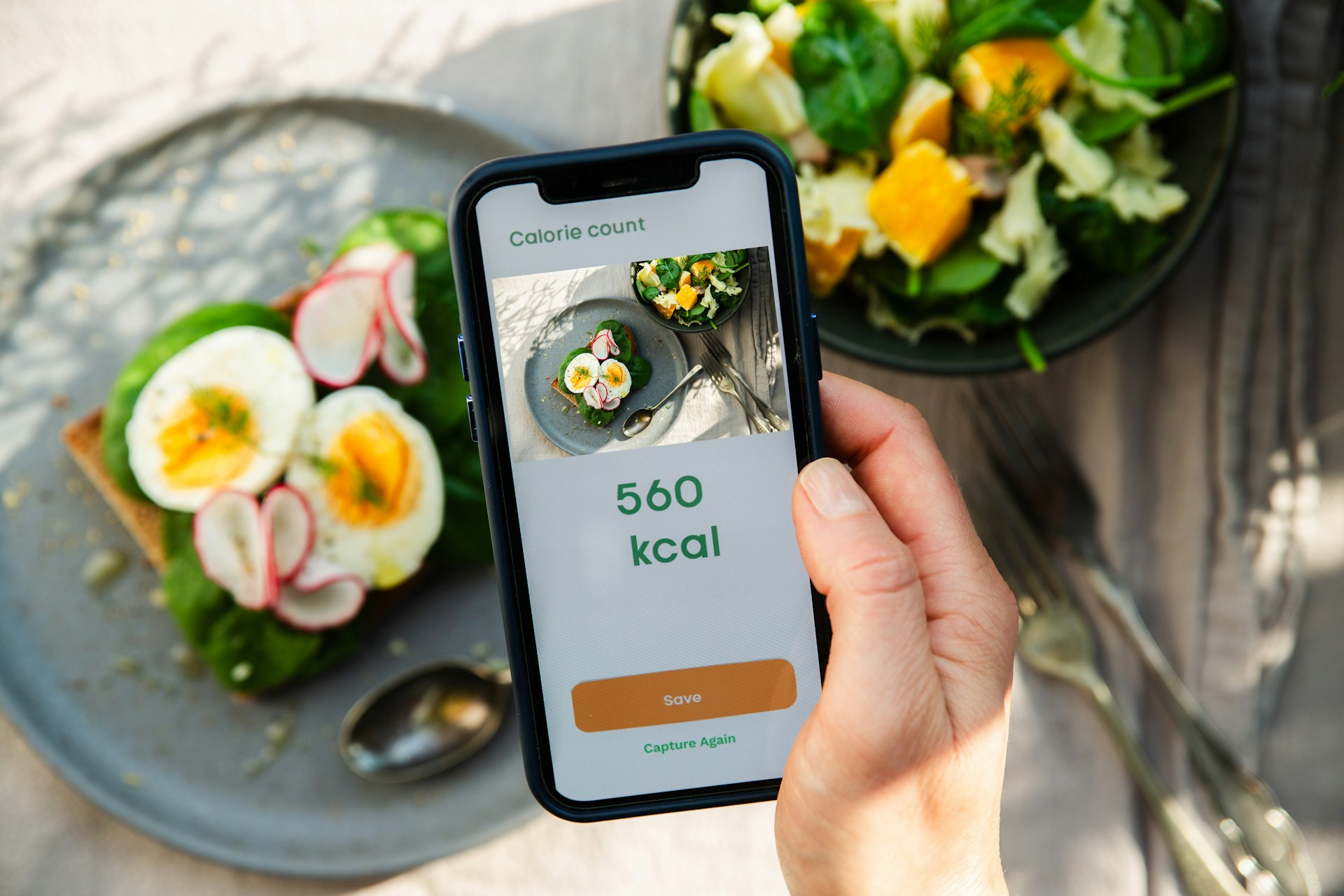Cycle syncing workouts can boost your energy levels, improve your mood, decrease PMS symptoms, and even improve your fitness performance. Here’s how.

Cycle syncing workouts can boost your energy levels, improve your mood, decrease PMS symptoms, and even improve your fitness performance. Here’s how.
Do you ever wonder why the same easy workout from last week feels infinitely harder this week? Why sometimes weight lifting makes you feel powerful, but sometimes you can’t imagine doing more than stretching? There are many factors that affect how we feel day-to-day, especially when it comes to exercise. However, it could have something to do with your menstrual cycle — and cycle syncing workouts may be the way to unlock your fitness potential.
Your menstrual cycle has four different phases, each characterized by specific hormonal changes and physiological responses. By paying attention to the natural changes in your energy levels and symptoms, you can cycle sync your workouts so you’re doing the right workouts for you at the right time.
Cycle syncing workouts can help you boost your energy, improve mood, and even reduce period symptoms. Ready to get started? Here’s your go-to guide.
What is the cycle syncing method of exercise?
First — what really is cycle syncing? Cycle syncing is an approach to fitness and well-being that involves tailoring exercise routines, nutrition, and self-care practices to align with the different phases of the menstrual cycle.
>>RELATED: Cycle Syncing Your Skin Care Routine
Each phase of the menstrual cycle brings unique hormonal shifts and energy levels, affecting mood, metabolism, and overall well-being. Cycle syncing takes these variations into account, allowing you to adapt your workouts, dietary choices, and self-care activities to best support your body during each phase.
Does cycle syncing workouts really work?
While individual experiences may vary, there is evidence to suggest that tailoring your exercise routine to your menstrual cycle can have positive effects on both fitness and overall well-being.
Research indicates that hormonal fluctuations throughout the menstrual cycle can influence factors such as metabolism, energy levels, and strength. By adapting workouts to align with these changes, you can maximize the benefits of your exercise regimen.
Does cycle syncing help balance hormones?
You can experience hormonal imbalances for many different reasons — from medications you’re taking or conditions like diabetes to stress and injuries. When you align your lifestyle to your cycle, you can help reset some of these hormones back into balance and even alleviate many of the uncomfortable symptoms that come with hormonal imbalances.
For example, if you know you have low estrogen levels, cycle syncing workouts to get your heart rate up can help not only boost those estrogen levels, but also navigate low estrogen symptoms like fatigue and cognitive changes.
Does cycle syncing help with weight loss?
Cycling syncing your workouts can help with weight loss, but it’s not a one-size-fits-all weight loss strategy.
Cycle syncing your workouts can help make your exercise routine more efficient and optimize performance, whether that’s running faster and longer or lifting heavier. That’s because cycle syncing increases muscle growth and helps with muscle recovery, allowing you to get stronger and fitter more efficiently.
Cycle syncing workouts can help you lose weight by promoting healthier exercise habits, but remember that factors like diet, genetics, and other lifestyle factors play a significant role in weight loss. Cycle syncing workouts alone will not lead to weight loss, but it can be a productive part of a comprehensive weight loss strategy.
If you’re interested in using cycle syncing as part of a weight loss strategy, it’s best to consult with a healthcare provider for personalized guidance.
Ultimately, whether or not cycle syncing your workouts "works" depends on various factors, including individual preferences, goals, and overall health. Cycle syncing workouts should be seen as a complementary approach to overall fitness and well-being. It's not a guarantee for instant results or a replacement for a balanced diet and regular exercise.
Listening to your body, experimenting with different workout approaches, and seeking guidance from healthcare professionals or qualified trainers can help you discover what works best for you.
What are the benefits of cycle syncing your workouts?
Anecdotal evidence and personal testimonials also suggest potential benefits. Many individuals report improved energy levels, better mood management, reduced PMS symptoms, and a greater sense of connection with their bodies. Other cycle syncing benefits can include:
- Improved digestive health
- Psychological well-being
- Better sleep quality
- Heightened productivity and creativity
- Stress management
- Optimized exercise performance
- Reduced risk of injury
- Enhanced muscle growth and recovery
- Reduced workout fatigue
What kind of exercises should you do while on cycle syncing?
So, cycle syncing workouts may help you with your fitness journey, health goals, and even relieving PMS symptoms. But what workouts should you do and when?
Menstrual phase
The menstrual phase, also known as your period, marks the beginning of the menstrual cycle. During this phase, hormone levels are relatively low, and you may experience symptoms such as fatigue, cramps, and mood changes. It's essential to listen to your body's cues and adjust your workouts accordingly.
In this phase, it's generally recommended to focus on gentle and low-impact exercises that promote relaxation, relieve discomfort, and support the body's natural healing process.
Here are some types of workouts that are beneficial during the menstrual phase:
- Yoga: Practicing gentle yoga poses can help alleviate menstrual cramps, improve circulation, and promote relaxation. Poses that gently stretch the lower back, hips, and pelvic area, such as child's pose, reclining bound angle pose, and supine spinal twist, can be particularly soothing.
- Pilates: Pilates exercises focus on core strength, stability, and body awareness. During the menstrual phase, engaging in Pilates workouts can help improve posture, alleviate lower back pain, and promote overall body balance. Exercises like the hundred, pelvic curl, and side-lying leg lifts can be incorporated into your routine.
- Walking or light cardio: Engaging in low-intensity cardiovascular exercises like walking, light jogging, or cycling can help boost blood circulation and release endorphins, which can improve mood and reduce menstrual discomfort. Aim for a moderate pace that feels comfortable for you.
- Stretching and relaxation: Incorporating stretching exercises and relaxation techniques like deep breathing, meditation, or guided imagery can help reduce stress levels, enhance relaxation, and relieve muscle tension associated with menstrual symptoms.
Follicular phase
The follicular phase is the first half of the menstrual cycle, beginning after the menstrual phase and leading up to ovulation. During this phase, hormone levels, including estrogen, gradually increase, bringing a surge of energy and vitality. This is an ideal time to engage in workouts that focus on building strength, endurance, and overall fitness.
Here are some types of workouts that are well-suited for the follicular phase:
- Strength training: The follicular phase is characterized by increased estrogen levels, which can enhance muscle strength and recovery. Incorporating strength training exercises using weights, resistance bands, or bodyweight can help build lean muscle mass, improve bone density, and boost metabolism. Squats, lunges, deadlifts, push-ups, and overhead presses are excellent examples of compound exercises to include in your routine.
- High-intensity interval training (HIIT): As energy levels rise, the follicular phase is an opportune time to engage in more intense workouts. HIIT workouts involve short bursts of intense activity followed by brief recovery periods. These workouts can improve cardiovascular fitness, burn calories, and enhance overall endurance. Examples of HIIT exercises include burpees, mountain climbers, jump squats, and high knees.
- Cardiovascular exercises: This phase is ideal for cardiovascular workouts that focus on improving aerobic capacity and stamina. Activities like running, cycling, swimming, or dance-based workouts can be enjoyable and effective during the follicular phase. Aim for moderate to high-intensity cardio sessions lasting 20-45 minutes, depending on your fitness level.
- Circuit training: Circuit training combines strength and cardiovascular exercises in a fast-paced, efficient workout. Design a circuit that includes a variety of exercises targeting different muscle groups. Move through the circuit with minimal rest between exercises to keep your heart rate elevated. Examples of circuit training exercises include jumping jacks, kettlebell swings, planks, and medicine ball slams.
Ovulatory phase
The ovulatory phase occurs around the middle of the menstrual cycle when the ovary releases an egg. During this phase, estrogen levels peak, and there's an increase in luteinizing hormone (LH). These hormonal changes create an optimal environment for energetic and invigorating workouts.
Here are some workout recommendations specifically tailored for the ovulatory phase:
- Cardiovascular interval training: Embrace the surge of energy during this phase with cardio interval training. Alternating between high-intensity bursts and active recovery periods can help maximize calorie burn, improve cardiovascular fitness, and boost endurance. Consider activities like sprint intervals, cycling sprints, or high-intensity dance workouts.
- HIIT with plyometrics: Combining HIIT with plyometric exercises can be particularly effective during the ovulatory phase. Plyometrics involve explosive movements that engage multiple muscle groups and increase power and agility. Incorporate exercises like jump squats, box jumps, burpees, and explosive lunges to challenge your body and stimulate overall strength and coordination.
- Dance workouts: Dancing not only provides a fun and enjoyable way to move your body but also helps improve cardiovascular endurance, coordination, and flexibility. Choose dance styles like Zumba, hip-hop, or salsa.
- Outdoor Activities: Activities like hiking, cycling, swimming, or playing a sport allow you to enjoy nature, soak up vitamin D, and engage in dynamic movements that support overall fitness and well-being.
Luteal phase
The luteal phase is the final phase of the menstrual cycle, characterized by increased progesterone levels and preparation of the uterus for potential implantation. During this phase, it's common to experience fluctuations in energy levels and possible premenstrual symptoms. Choosing workouts that prioritize stability, balance, and relaxation can be beneficial during this phase.
Here are some workout recommendations for the luteal phase:
- Strength training: Focus on strength training exercises that target major muscle groups, emphasizing controlled movements and proper form. Strength training not only helps build lean muscle mass but also supports bone health and boosts metabolism. Use free weights, resistance bands, or bodyweight exercises like squats, lunges, push-ups, and planks to maintain muscle tone and enhance overall strength.
- Yoga and gentle stretching: These practices promote flexibility, relaxation, and stress reduction. Opt for restorative yoga, yin yoga, or gentle flow sequences that emphasize deep stretching, mindful breathing, and calming movements. These exercises can help alleviate tension and discomfort associated with premenstrual symptoms.
- Pilates and barre: Pilates exercises engage deep core muscles, while barre workouts combine elements of ballet, Pilates, and strength training. These workouts help improve posture, enhance body awareness, and promote overall muscular balance.
- Low-intensity cardio: Engage in low-intensity cardiovascular exercises during the luteal phase to support blood circulation and maintain overall fitness. Walking, light jogging, swimming, or cycling at a comfortable pace can provide cardiovascular benefits without excessive strain. These activities help release endorphins, boost mood, and contribute to overall well-being.
- Mindfulness activities: Consider incorporating mindfulness activities such as meditation, gentle nature walks, or restorative practices like Tai Chi or Qi Gong during the luteal phase. These practices promote relaxation, stress reduction, and mental clarity. Engaging in activities that foster mindfulness and self-care can help manage any emotional or physical symptoms that may arise during this phase.
How long does it take to see results from cycle syncing?
Seeing results from cycle syncing, especially cycle syncing workouts, can take anyway from multiple weeks to many months. Results depend heavily on your current fitness level, consistency, and specific fitness goals.
For example, some people might notice improvements in workout performance, energy levels, and recovery soon after start cycle syncing workouts—just after a few cycles. However, if you’re looking for more significant changes like increases in muscle strength, endurance, or changes in how your body looks, it may take several months of high consistency before you see results.
Every person is different, and results may come faster for some and slower for others, even with the same consistency. Factors like individual hormonal fluctuations, genetics, and previous fitness can influence the timing of your cycle syncing workout results.
How to start cycle syncing workouts
Ready to cycle sync your workouts? You’ll need to track your cycle accurately and take note of what’s working (and not working!) for you through each phase.
Track your cycle
Start by tracking your menstrual cycle to identify the different phases. Keep a record of the start and end dates of your period, as well as any noticeable changes or symptoms throughout the cycle. Tracking can be done using various methods, including calendar tracking, mobile apps, or specialized devices like Oova. Oova is a comprehensive, at-home fertility tracker that measures key fertility hormones (progesterone and LH) to give you a clear, accurate picture of your cycle.
Plan your workouts
Once you have a clear understanding of your cycle phases, you can plan your workouts accordingly. Designate specific types of exercises and intensity levels for each phase — and refer back to the previous sections of this article for workout recommendations tailored to each menstrual phase!
Be sure to ease into cycle syncing workouts by gradually incorporating the recommended exercises for each phase. Start with one or two workouts per week that align with your current phase, and gradually increase the frequency as you become more comfortable and confident.
Listen to your body
Remember to listen to your body throughout your cycle. It's normal for energy levels and physical capabilities to vary. Adjust your workout intensity, duration, or even the type of exercise based on how you feel. Prioritize self-care and adapt your routine to support your well-being during each phase.
Monitor and adjust
Over multiple cycles, continuously monitor how cycle syncing workouts impact your overall well-being and exercise performance. Pay attention to any changes in energy levels, mood, and physical responses. Adjust your workout routine as needed to accommodate any variations in your cycle or personal preferences.
Remember, cycle syncing workouts are a personalized approach, and everyone's experience may differ. Find what works best for your body and adapt the recommendations to suit your unique needs and goals. By syncing your workouts with your menstrual cycle, you can optimize your fitness journey, enhance your overall well-being, and harness the power of your body's natural rhythms.
About the author

Sources
About the Oova Blog:
Our content is developed with a commitment to high editorial standards and reliability. We prioritize referencing reputable sources and sharing where our insights come from. The Oova Blog is intended for informational purposes only and is never a substitute for professional medical advice. Always consult a healthcare provider before making any health decisions.



